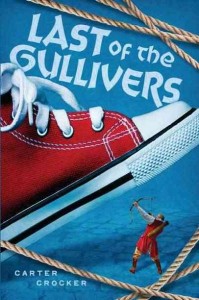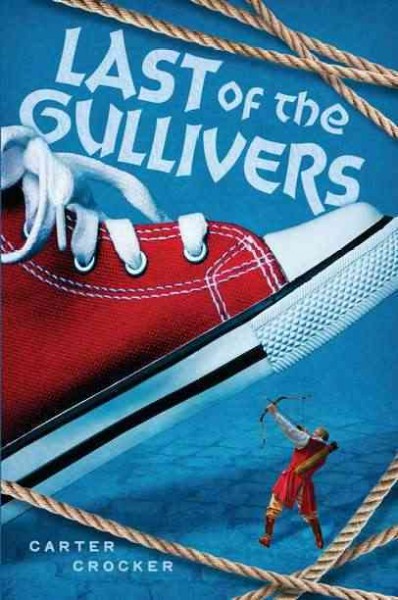 What would have happened if Jonathan Swift’s Cpt. Lemuel Gulliver had gone back to Lilliput once more and brought back with him to England a colony of Lilliputians? Imagining the fate of such a colony and the care and secrecy with which their survival would depend is the seed of Carter Crocker’s The Last of the Gullivers.
What would have happened if Jonathan Swift’s Cpt. Lemuel Gulliver had gone back to Lilliput once more and brought back with him to England a colony of Lilliputians? Imagining the fate of such a colony and the care and secrecy with which their survival would depend is the seed of Carter Crocker’s The Last of the Gullivers.
Michael Pine is a 12 year old orphan, bored with life and school, and headed towards juvenile detention. When he’s caught stealing his fate seems sealed; until a local magistrate gives him a chance at rehabilitation. Michael takes an after school job at the village market and there meets a strange old man who introduces Michael to a world beyond anything he can believe: tiny people, Lilliputians, living in a miniature city in Mr. Gulliver’s backyard. But the world today is encroaching and the Lilliputians survival is at stake. Mr. Gulliver believes only Michael can save them and too soon he leaves them in Michael’s care. But Michael has his own problems: he’s still on probation, is being harassed by the local thugs to rejoin their gang, and then he’s framed for a theft he didn’t commit. As peril befalls Lesser Lilliput it also befalls Michael, and its increasingly unclear if he’ll be able to save them.
Crocker creates a imaginative tale with many of the elements of Swift’s classic, adapted nicely for modern middle school readers. Although the pacing is sometimes slow, the story is structured in such a way that it steadily increases the tension until the climax and there’s even a sprinkling of Swift’s trademark satire throughout. It’s satisfying to see Michael successfully shoulder all the responsibility that’s heaped on him and learn to stand up for himself in the process. In the end, it’s more than the folks in Lesser Lilliput that Michael has the courage to save.
- Posted by Cori

